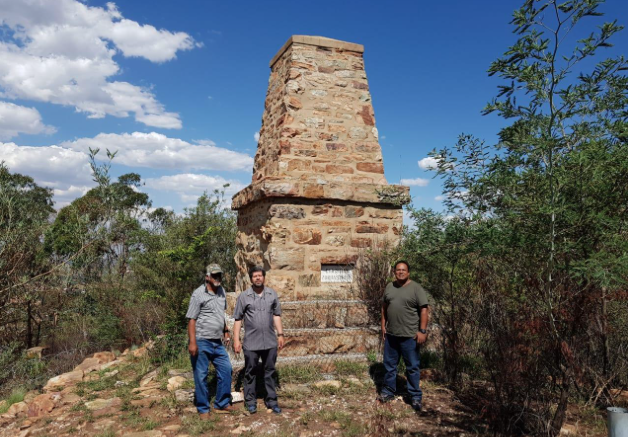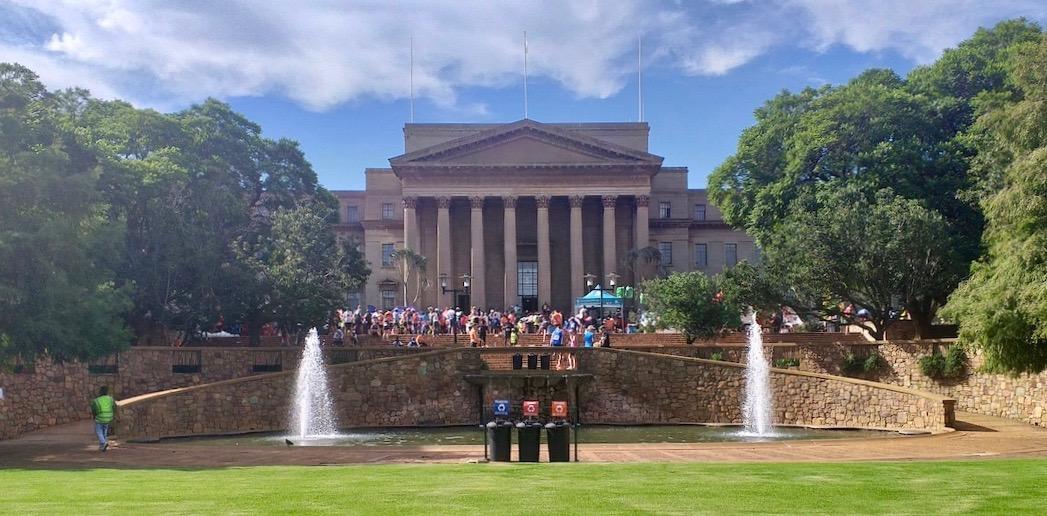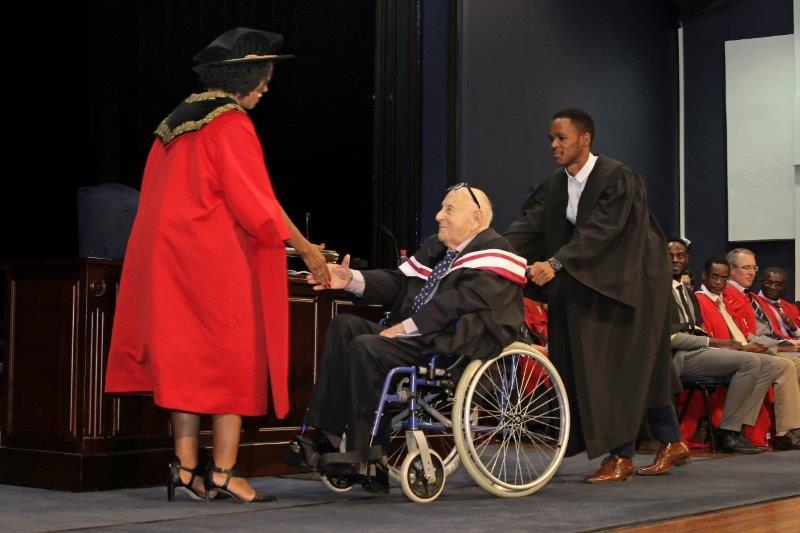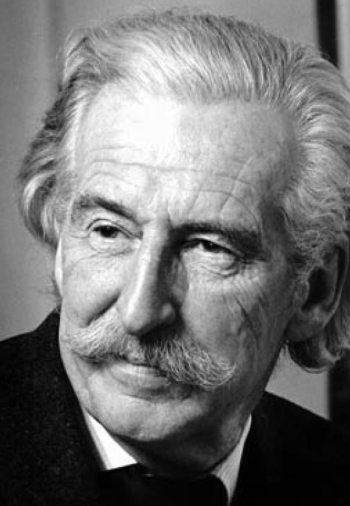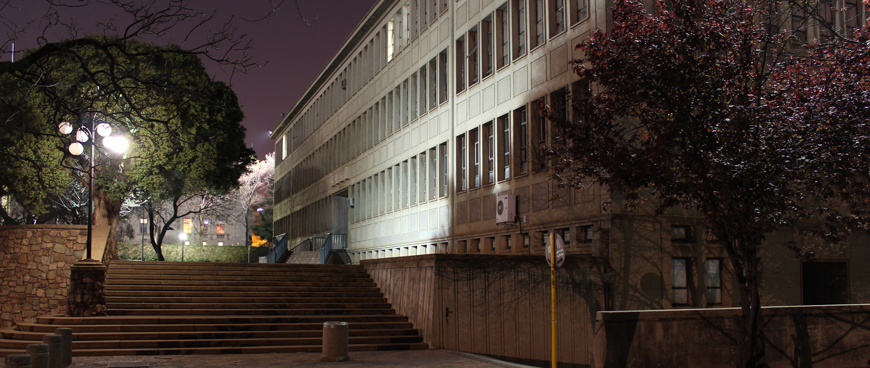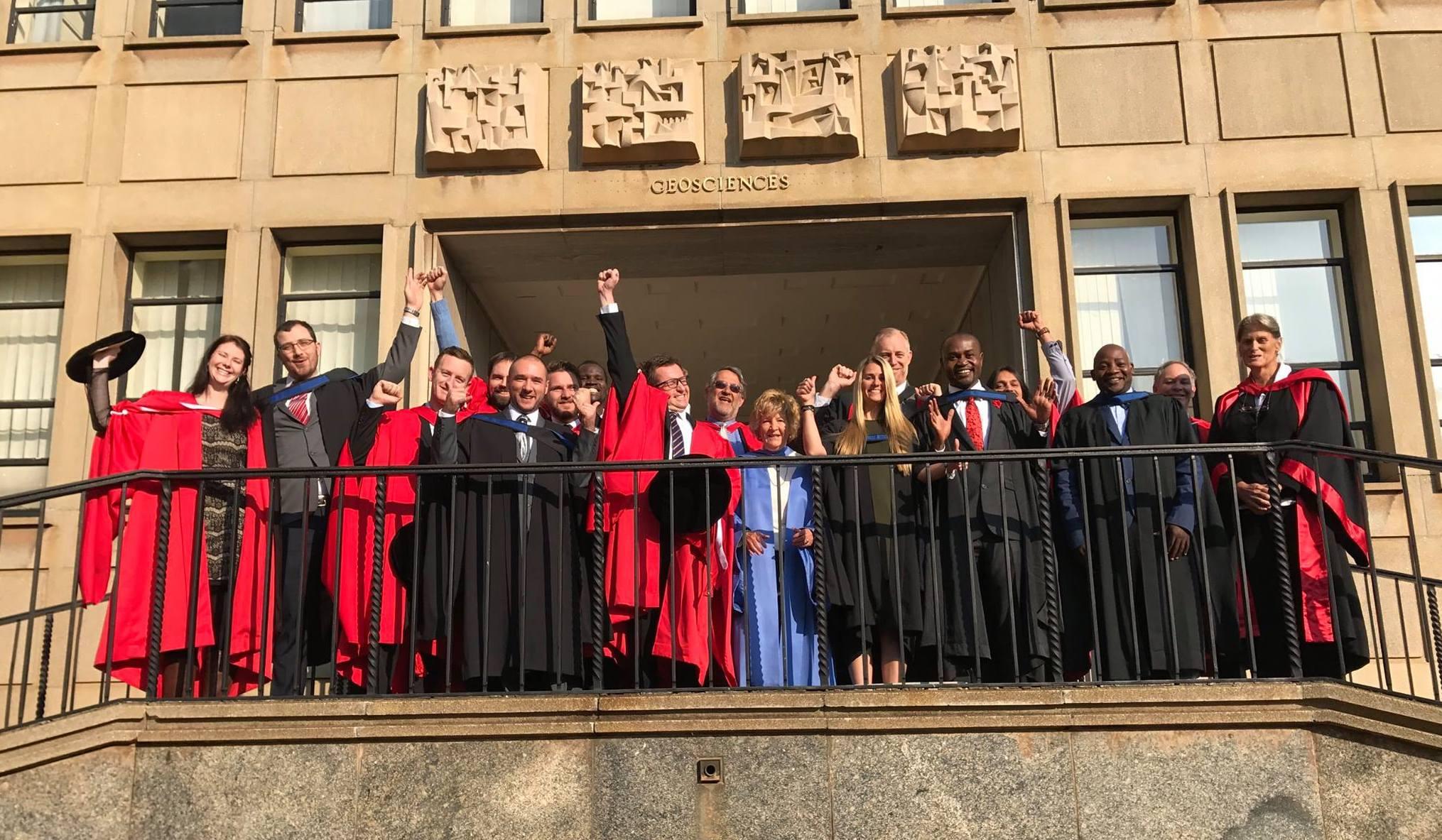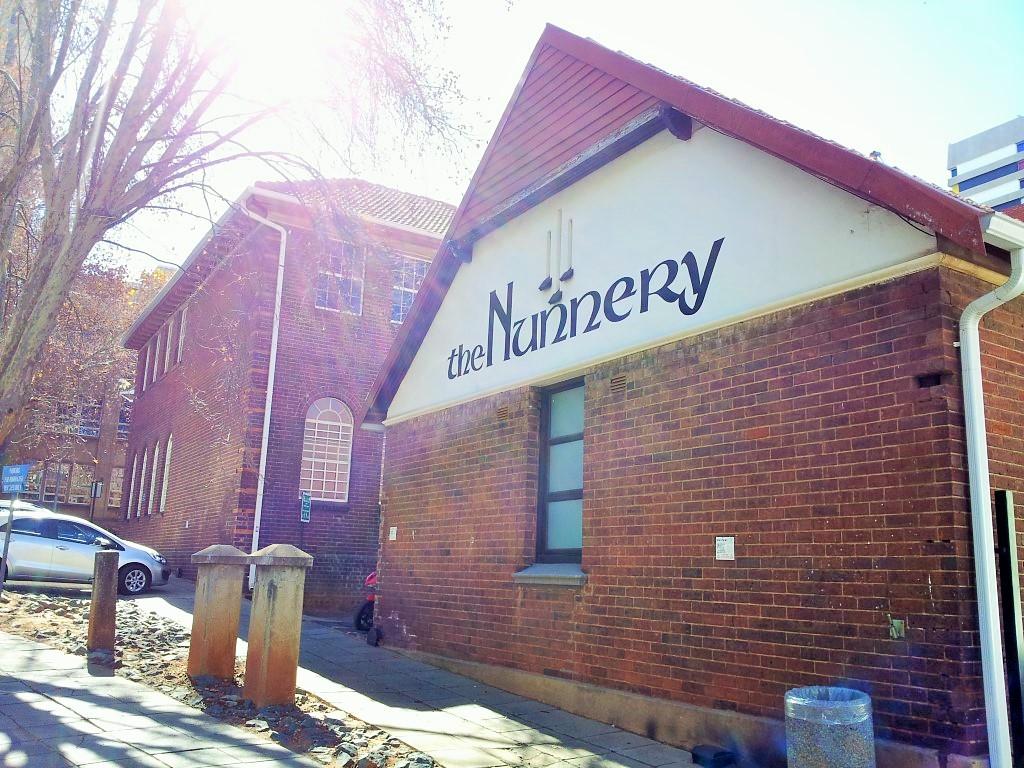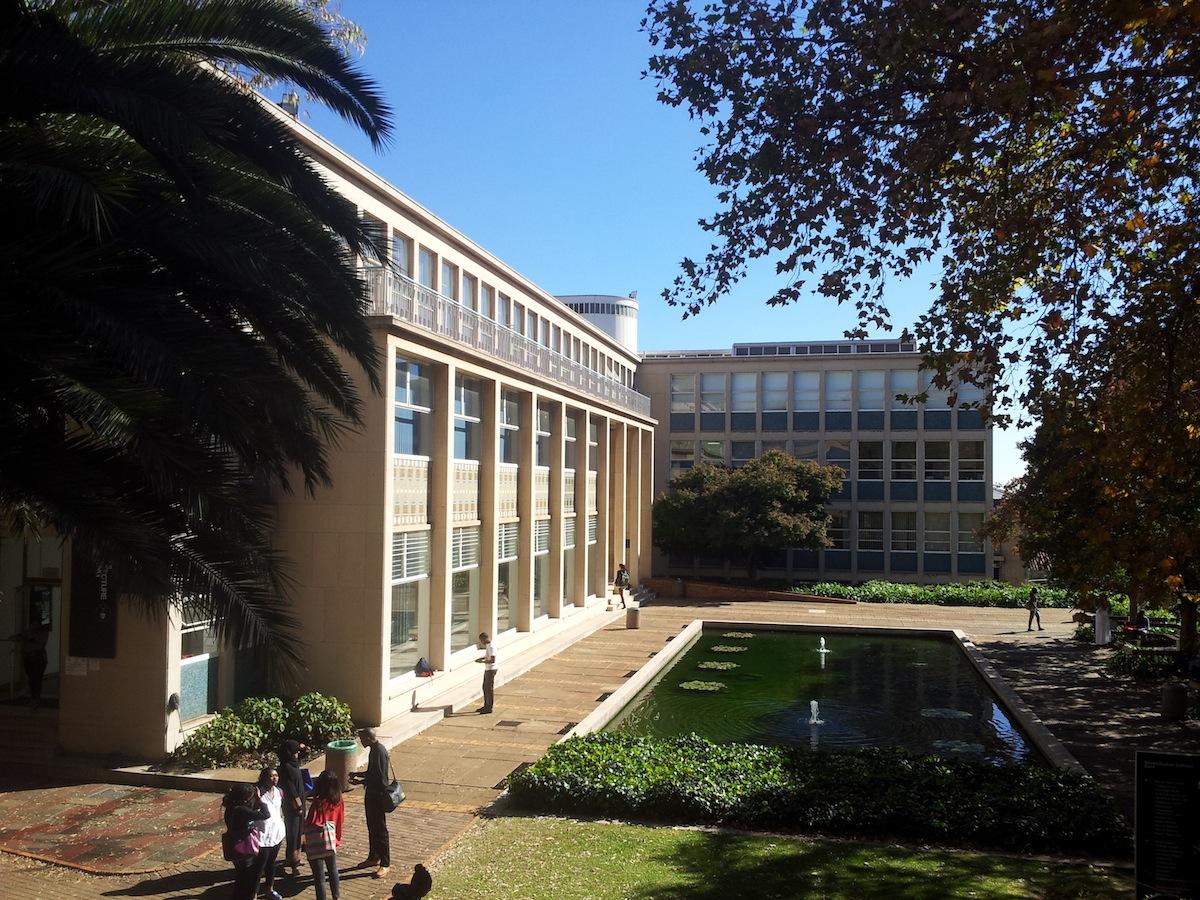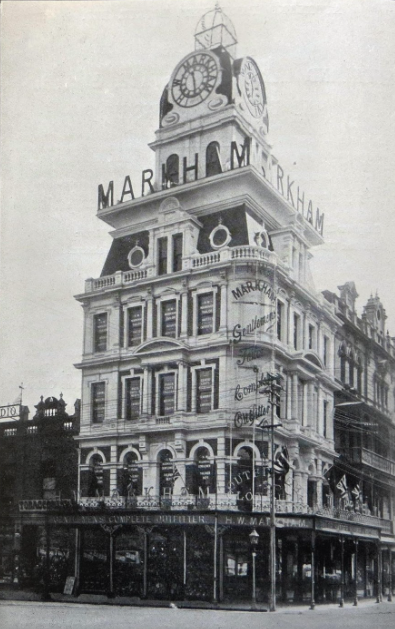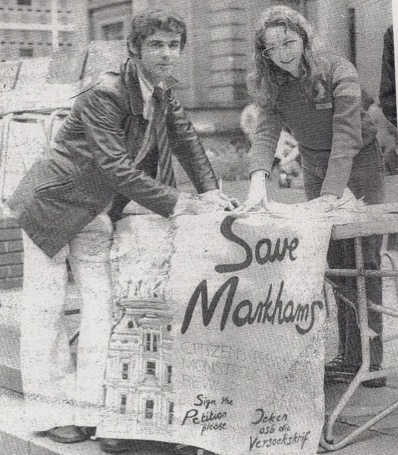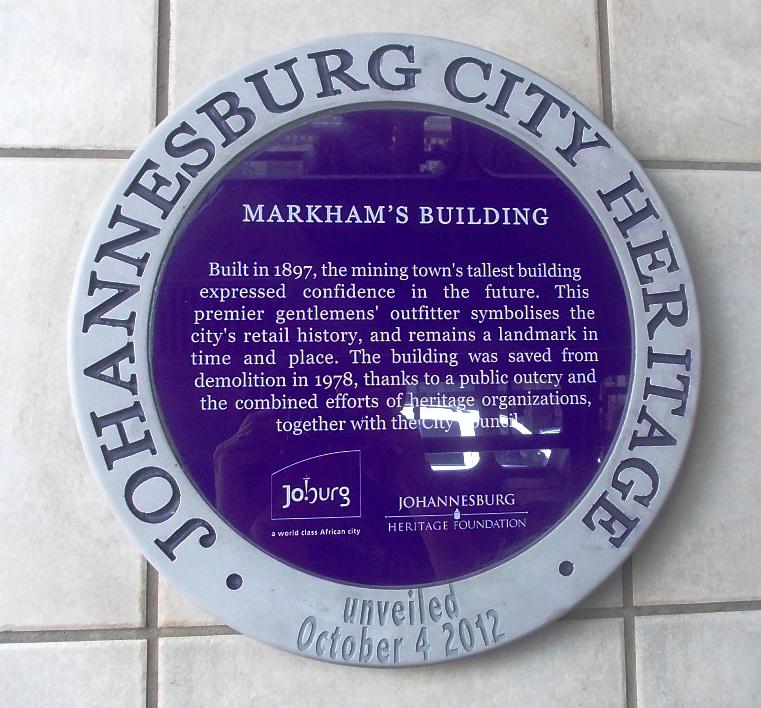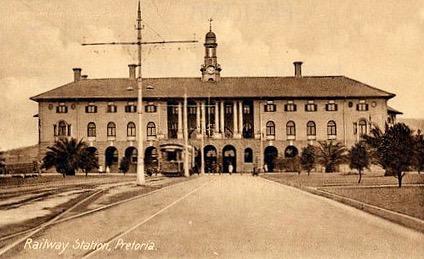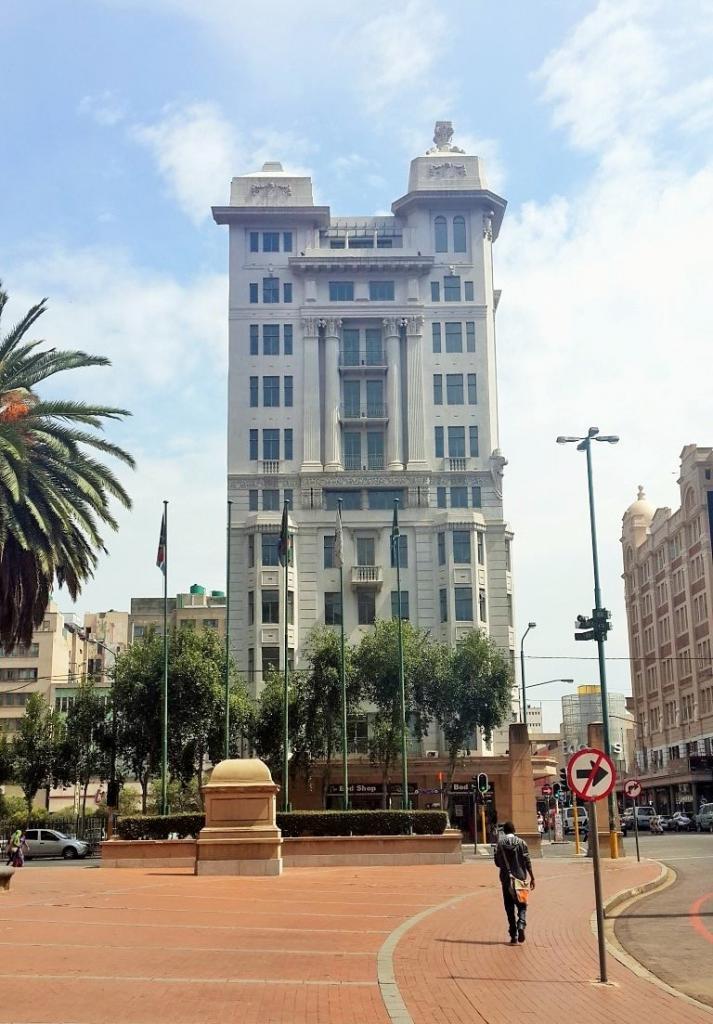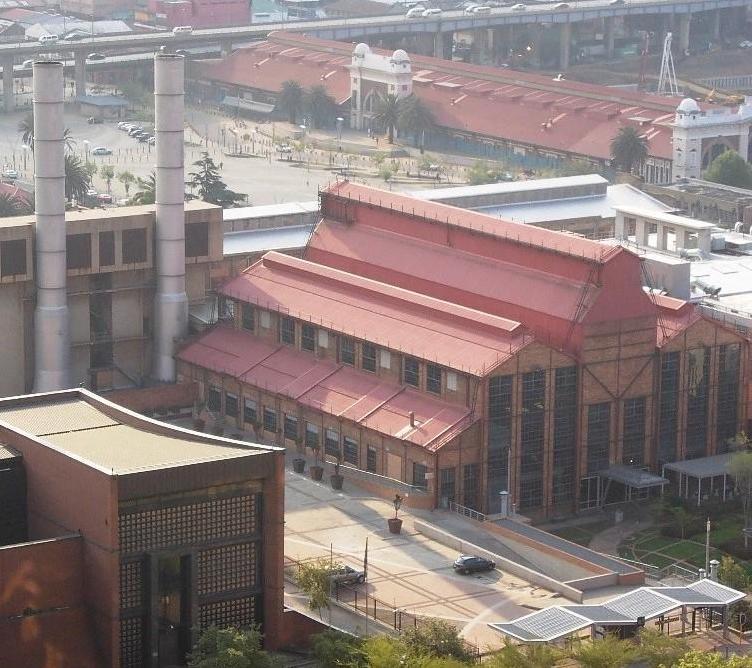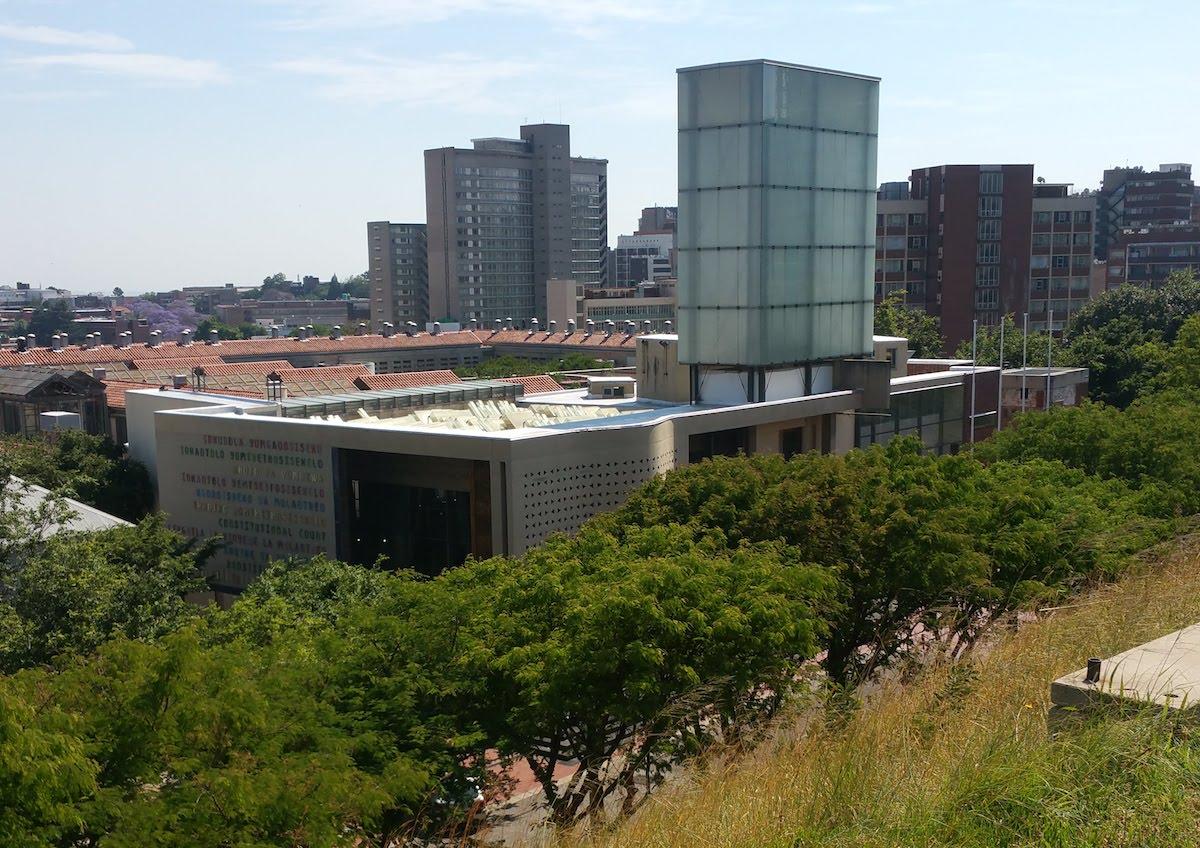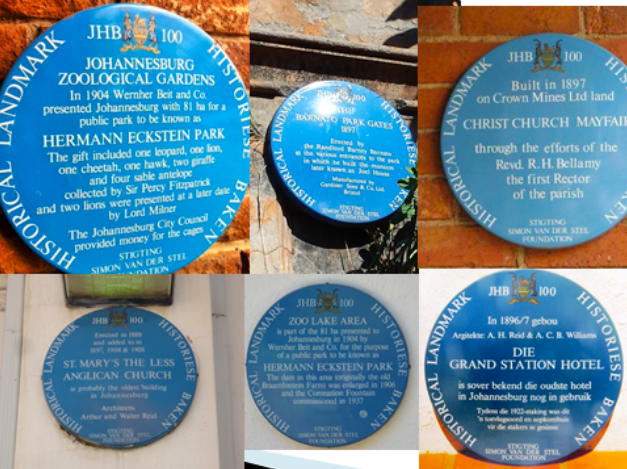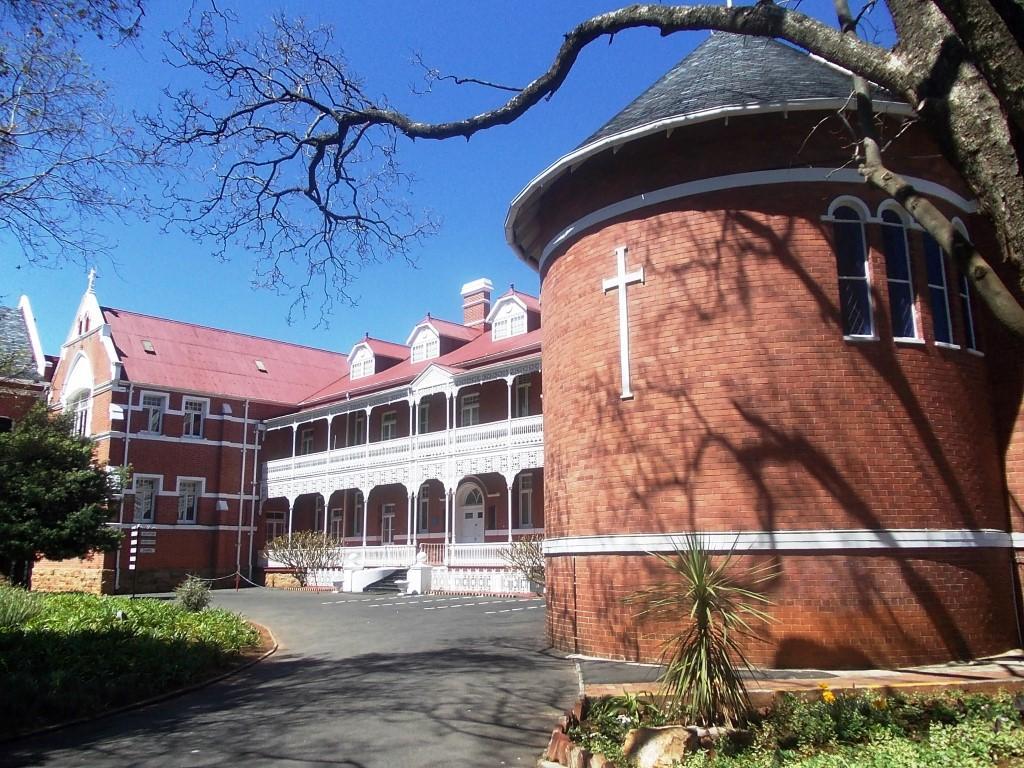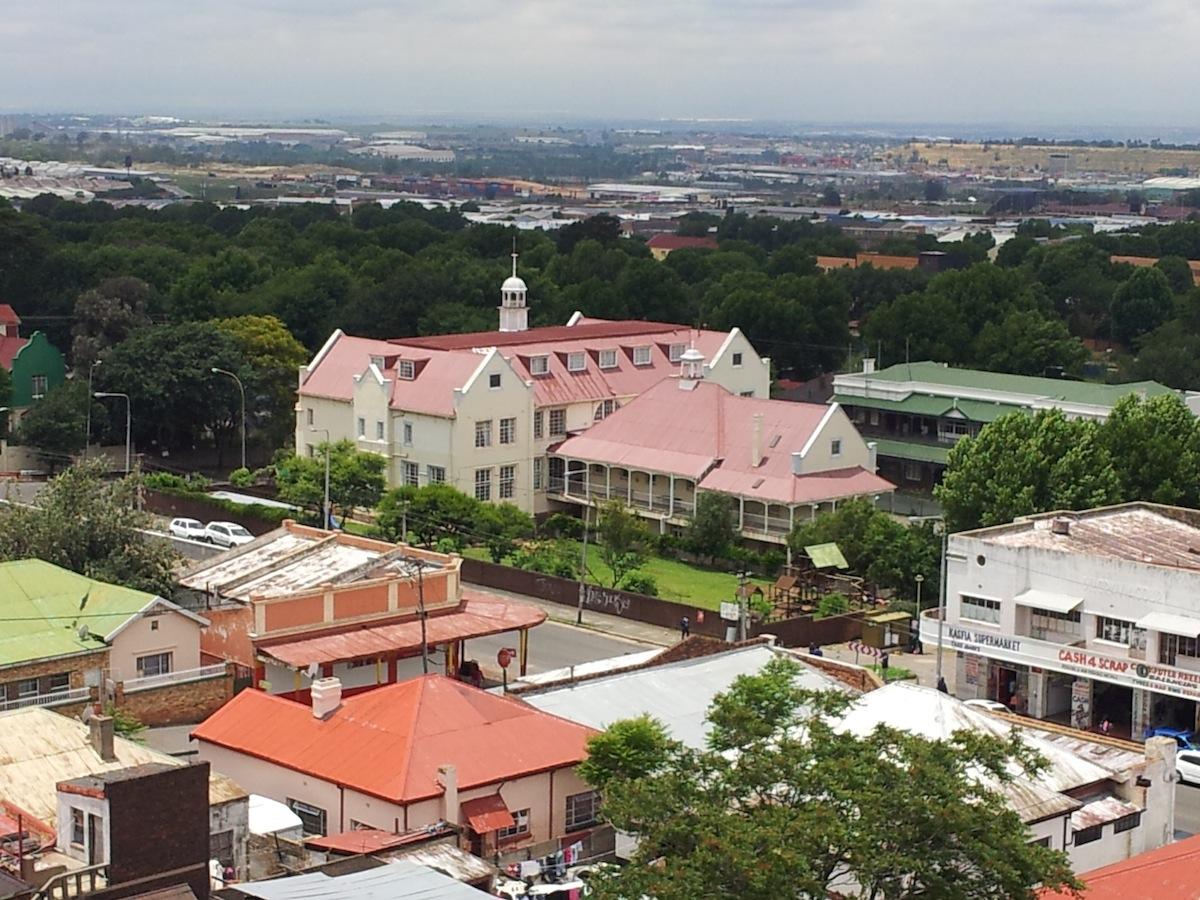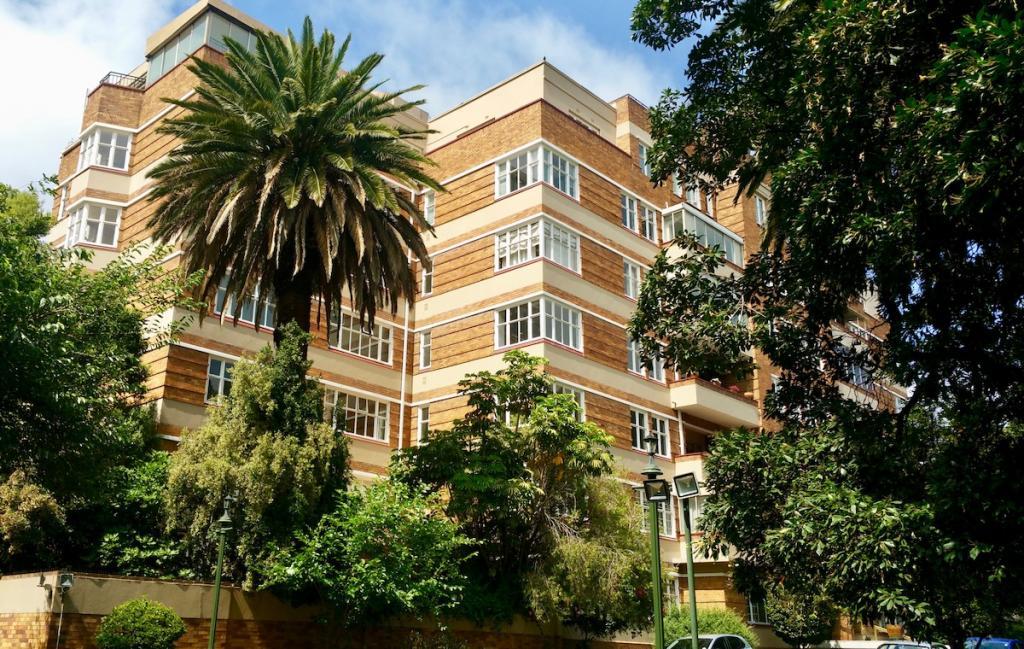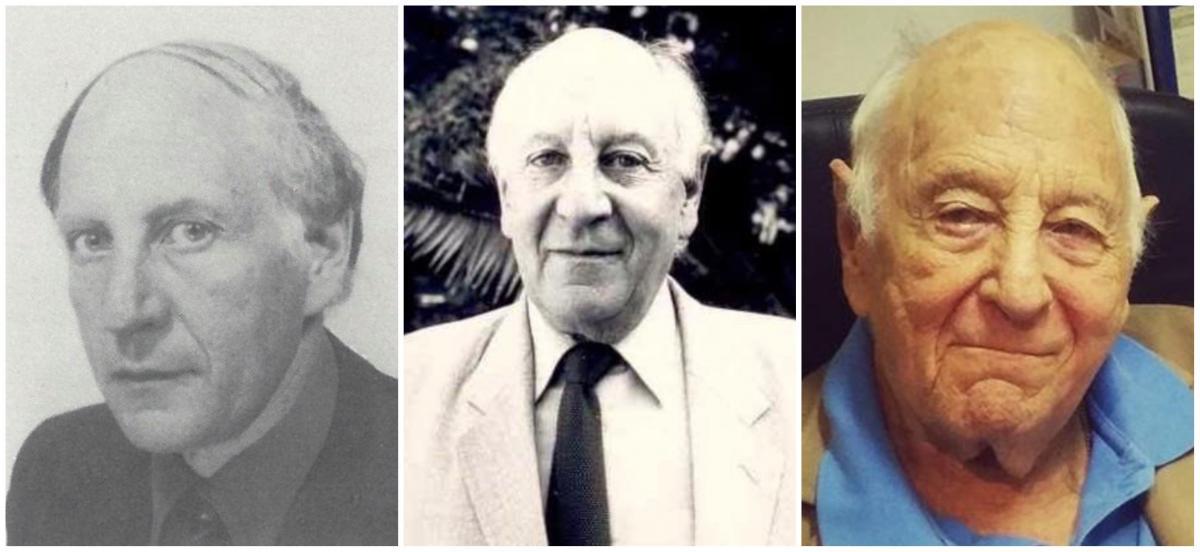
Disclaimer: Any views expressed by individuals and organisations are their own and do not in any way represent the views of The Heritage Portal. If you find any mistakes or historical inaccuracies, please contact the editor.
Herbert Maurice John Prins, distinguished architect, professional conservation and heritage architect and practitioner passed away on Wednesday, 15th April 2020, just 12 days short of his 93rd birthday. His was a long, rich and remarkably productive life. Herbert was a role model in his work and ongoing commitment to the heritage of Johannesburg and other parts of South Africa until just a couple of months before his death. It was a joy to celebrate his 90th birthday in 2017. His professional career extended over 72 years - surely a record. I found his last email letter to a discussion group was on 10th March 2020 (all about the draft regulations for property practitioners) and in January 2020 he took a stand on the proposal to move the oldest of Johannesburg’s war memorials, the Indian Memorial on the Observatory Ridge; Herbert firmly said “ no”.
Indian Monument on Observatory Ridge (Vinesh Selvan)
Herbert’s career fell into three parts - professional architect in his early career (1948 to 1970), an academic at Wits University (1970-1996) and then a third career as a specialist conservation consultant and eminent heritage authority, with his own practice (1997 to 2020). Of course there was a degree of overlap.
Herbert's second career was at Wits University (The Heritage Portal)
This lengthy professional career has many highlights and enabled Herbert to become a specialist of some distinction. His work over a life time was recognized and valued. Wits University, his alma mater, awarded him the rare distinction of a Gold Medal in 2019, the South African Institute of Architecture honoured Herbert with their Gold Medal of Distinction and in 2002 the Simon Van der Stel Foundation (now the Heritage Association of South Africa) awarded Herbert their Foundation Gold Medal. The Gauteng Institute for Architecture honoured Herbert with their prestigious Life Membership Award and Herbert was a lifetime member of the South African Institute of Architects.
Herbert receiving the Wits Gold Medal
Herbert was born in Kimberley in 1927. He was educated at St Andrews School, Bloemfontein as well as spending part of his Junior Certificate year at St Andrews in Grahamstown. He studied architecture at the University of the Witwatersrand, earning his Bachelor of Architectural Studies degree (he graduated in 1952). In those days this was a five year qualification and Herbert started his practical training in 1948, first working for a short stint for Monty Bryer and then Harold Porter and Partners and then working for a few years for John Lowe at the Rand Water Board, where he took over a great deal of design work for the civil engineers. In 1952 (by that date Herbert had submitted his design discourse to Wits and been awarded his degree), he and his lifelong friend, Ivan Schwartz, left for England to enjoy the excitement of travel, youth, adventure and gain overseas work experience. After a short spell with an old firm, Lanchester and Lodge, Herbert landed a plum position with Frederick Gibberd who was pioneering an entirely new approach to town planning and creating a new post-war English town at Harlow in Essex. Herbert worked for the Harlow Development Corporation from 1952 to 1956 gaining experience in the design of industrial buildings, shops, houses and offices. It was a broad education with the best of British post- war planners and architects.
Sir Frederick Gibberd (Gibberd)
In 1956 Herbert returned to South Africa because of his father’s ill health and joined the architectural firm of Hanson and Tomkin (formerly Hanson, Tomkin and Finkelstein). He became a partner in charge of the Johannesburg office in 1960, when Norman Hanson (a contemporary of Rex Martienssen) was appointed to the Chair of Architecture at Manchester University. The firm was now known as Hanson, Tomkin and Prins Architects. In an unpublished transcript of an interview with Herbert Prins in 2010, Herbert Prins described to James Ball the work of the firm as belonging to the New Empiricism, an architectural approach that learnt from the past in order to allow experience and knowledge to inform the aesthetics of the building. Architecture had transitioned from Modern to New Empiricism. A good example of a building done by Hanson and Tomkin in this manner was the New Medical Centre in Jeppe Street, Johannesburg. Herbert through his work for Hanson and Tomkin was involved heavily in the design of the Zionist Federation Building, corner De Villiers and Banket Street, Johannesburg. Increasingly Prins took on the design work of the practice for their commissions for the University of the Witwatersrand, specifically the Mining and Geology Building at Wits (now the Geosciences building). I share Hannah Le Roux’s view of the beauty of this building and why it matters and I can add that I have both attended many a lecture in the Geology Lecture Theatre and delivered many a lecture in that same room and can vouch for it being a lecture room that works to perfection with its raked theatre like floor correct acoustics and the high lecture desk. I love the introduction of the art of Eduardo Villa on the panels of the facades, filled with symbolic meaning of place and purpose. During the Hanson and Tonkin years Herbert was also responsible for the new Wits Medical Library and the Second Medical School in Esselen Street, Hillbrow designed and erected between 1964 and the late 1960s. Prins also completed a masterplan for the Science Campus together with a Physics building for the then University of Natal’s Science Campus.
Geosciences Building at night (Wits)
Graduates outside the Geosciences Building. Note the Eduardo Villa panels. (Wits)
His reputation as an architect of quality university buildings drew Herbert closer to Wits University. Prins started a closer association with part-time studio work in the tradition that had always existed in Johannesburg, where there was a ready interchange of professionals coming to teach students, who in turn became draughtsmen and learnt the practicalities of their art in architectural practices. In 1970 Duncan Howie invited Herbert to join the Department of Architecture at Wits on a full time basis and Herbert took up the position of Senior lecturer (at that time this was the standard career grade for academics). This launched Prins on his second career as a teacher and lecturer whilst at the same time keeping his creativity alive with part time architecture design work. Wits management too valued his talents; for example he handled a project to convert the School Hall that had been part of the McAuley House Convent into a theatre, a small heritage gem that we now call The Nunnery, when that convent property became part of the East Campus at Wits. Herbert Prins was also responsible for the new Annex building for the Department of Architecture in the late 1970s; it was a difficult design challenge as it meant linking the existing John Moffat building via a first floor corridor to the new building and had to be erected ahead of the next academic year, quickly responding to the demand for more studio space. Herbert remained at Wits until 1996 when he retired.
The Nunnery (The Heritage Portal)
John Moffat Building (The Heritage Portal)
Over the years he taught and influenced many students who went on to become the next leaders of the profession and recall with great fondness Herbert’s presence and authority during the Headship of Pancho Guedes. Herbert also served as Head of Department between 1976 and 1978. There are fine tributes from the children of the late Professor Pancho Guedes testifying to the pivotal role played by Herbert in facilitating the work and achievements of Professor Geudes at Wits. Herbert served as an external examiner at a number of other South African universities and fulfilled the usual functions of a University senior position – committee work, board work, teaching and examining students.
Herbert became involved in the cause of heritage in the 1970s, when at the request of Selma Browde, he rallied the architecture students to protest the destruction of a J M Solomon House when the City of Johannesburg proceeded to create the Pieter Roos Park on the edge of Hillbrow. It was his first lost battle but the Heritage community had gained a fighter and stalwart and Herbert’s interests evolved. In the late 1970s, Herbert became the chairperson of the 'Save Markhams' Committee when there was a proposal to demolish Markhams and its clock tower on Eloff Street, Johannesburg. Through public action and Herbert’s leadership, Markham’s facades were saved and today Markhams boasts a blue plaque.
Old photo of the Markhams Building
A member of the public signing the petition to save the Markhams Building
Markhams Blue Plaque (The Heritage Portal)
That battle prepared Herbert for the even bigger campaign around the Colosseum Theatre on Commissioner Street, Johannesburg when redevelopment was planned. Herbert was a pragmatist but also a conservationist and was prepared to work with the developers to contribute pro bono his designs for a redevelopment that would keep the old Colosseum. The Prudential (the new owners) refused to even look at the sketches and the case for heritage became an unpleasant fight when Herbert’s professional integrity was besmirched in a radio interview. Herbert took on the Prudential in a legal fight and was defended by Edwin Cameron. Edwin became a lifelong friend and ultimately the case was settled out of court with Herbert using the fairly modest financial settlement to create and endow a trophy (made by the artist, Cecil Skotnes) and a heritage award. The purpose of the new Colosseum Award was in Herbert’s words, ”not to be nostalgic about something lost, but rather to use the name symbolically to honour those who value heritage more than the Prudential did when it demolished the Colosseum”. (2010 interview with James Ball). It was a floating trophy and the recipients of the trophy have been: The Turbine Hall, the Newtown head office of NUMSA, Salisbury House in Belgravia and the Shandukani Clinic at the old Johannesburg Hospital.
The Colosseum Award
Old photo of the Colosseum Theatre
In 1990 Herbert himself earned the new Wits Master’s degree in Heritage Conservation. He retired from Wits in 1997 at the age of sixty (the then compulsory retirement age). Of course it was far too young, but it was the opportunity for Herbert to turn his passion for heritage into his profession and he opened his own consultancy, HMJ Prins Architect, in the new specialization of heritage. It was the right moment as the new government had a wider and more inclusive conception of heritage and its management in the new South Africa. Herbert went on to produce some splendid Heritage Impact Assessments, which within his lifetime have become valuable archival resource material. Herbert was the heritage consultant for a number of major projects in the new South Africa – the restoration of the Reserve Bank in Pretoria, the restoration of the Pretoria Railway Station (designed by Herbert Baker) and gutted by fire in 2001, the Walter Sisulu Square of dedication in Kliptown (commemorating the 1955 Congress of the People), the Barbican Building in Rissik Street, Chancellor House the Newtown Precinct among others.
Old Postcard of the Pretoria Railway Station
Barbican Building (The Heritage Portal)
Most prestigious was the redevelopment of the Johannesburg Newtown power station that became Turbine Square and the headquarters of Anglo-Gold Ashanti. Another special project was the upgrading of Vilakazi Street in Soweto. Then there was the major redevelopment of the Constitutional Hill site in Johannesburg’s old Fort and prison. He served as a valued member of the Building Committee of the Constitutional Court and played a key role in the design and construction of the new Constitutional Court. Edwin Cameron commented at the time that Prins’ views were “knowledgeable, authoritative and compelling and bring a truly vast array and depth of architectural design, aesthetic and cultural-historical wisdom and knowledge to the work of the Court”.
Turbine Hall from above (The Heritage Portal)
Constitutional Court (The Heritage Portal)
Over the years Herbert was actively involved in several professional committees including the South African Institute of Architects, the South African Council for the Architectural Profession (SACAP), the National Monuments Council (NMC), and the Provincial Heritage Resources Authority (Gauteng). He held a number of service positions including that of president of the Transvaal Institute of Architects (TIA, in 1978 and 1979), president in chief of the Institute of South African Architects (ISAA, in 1982 and 1983).
In the area of public and civic engagement, Herbert was the chairman of the Rosebank Action Group (RAG). He was involved in the Blue Plaque movement from 1986 and his initiative drove the Johannesburg 100 blue plaques series for the Johannesburg centenary and erected under the auspices of the Simon van der Stel Foundation and the City of Johannesburg. A few of those old blue plaques are still to be seen, for example at the Johannesburg Zoo, at the entrance to the West Campus of Wits University, on the Beardwood designed building at the Holy Family College (the old Parktown Convent) and at St James’ School in Belgravia (the original St Mary’s School).
Johannesburg 100 Plaques (via Kathy Munro)
Holy Family College (The Heritage Portal)
St James Prep Belgravia (The Heritage Portal)
It is also appropriate to record in this account of Herbert Prins’ work and influence the establishment of the Egoli Heritage Foundation in Johannesburg, which Prins established in the early 1980s. This Foundation was formed as a result of a merger between three older Johannesburg heritage organisations, the Johannesburg branch of the Simon van der Stel Foundation. The Johannesburg Historical Foundation and the Sandton Historical Society. It is not difficult to imagine the negotiating skills required to bring these bodies under one new voluntary organization. Herbert Prins was the leader able to bridge divides. Egoli is a voluntary organization, involved in creating an awareness of heritage conservation and comprises a small group of interested and concerned people. It coexists and runs in parallel with the Johannesburg Heritage Foundation (the successor body to the Parktown and Westcliff Heritage Trust) established by Flo Bird. Flo and Herbert decided that it was desirable for heritage to be promoted through two independent platforms and it would not be desirable to merge these bodies. Herbert was never a member but was a trustee of the Parktown and Westcliff Heritage Trust and remained a trustee of the Johannesburg Heritage Foundation from its foundation until 2019 and served these bodies with wisdom and distinction. Herbert would always make the firm authoritative comment on critical items of business.
Egoli also supports the raising of blue plaques on buildings deemed worthy of heritage status. Egoli is currently chaired by Jacques Stoltz and is an active member of the Heritage Association of South Africa (the successor body to the old Simon van der Stel Foundation).
Herbert also made efforts to revive and revitalize the inner city of Johannesburg and served on the Johannesburg Heritage Trust with Neil Fraser and Henry Paine from its inception in circa 2000 and its closure in circa 2015. He was the Vice Chairman of this body.
Herbert was a lifetime member of the Johannesburg Country Club and it was a delight to be Herbert’s guest at the annual Life Members Christmas Lunch in December 2019. Tony Beart who was the general manager of the Country Club for 13 years (now retired) recalls that Herbert was the resident consultant in all things heritage at the Country Club: “we did not move without his input”. Herbert ensured that the Auckland Park Country Club retained their billiard room, understood the value of the old brick water tower and the new patio development at the Country Club was guided in its design by Herbert to ensure a happy blend of heritage, revitalization and good aesthetic design. The development of the conservation and nature reserve surrounding the Woodmead Country club (of the Johannesburg Country Club) also shows his influence.
Herbert was a connoisseur of fine furniture, art works, silver and ceramics. His beautiful home in the Art Deco apartment block, Mentone Court was filled with treasures. He was a collector of fine objects all his life, informed by his knowledgeable taste. He really knew his Art Deco. Len Raymond comments that Herbert “was an expert on early Cape Furniture and assembled an impressive collection including some of the best and oldest pieces of Africana as well as the best collection of early Martavans many of which are included in Barbara Woodward’s book on pottery and ceramics in South Africa from the east. Herbert’s best chairs are prime examples of the cream of their style in South Africa.“
Mentone Court (The Heritage Portal)
The need to move into a hotel due to old age forced the sale of most of his fine collection in 2014. At that point Herbert donated the greater part of his impressive archive to the University of Pretoria, School of Architecture, a small Wits collection went to various Wits repositories and the Johannesburg heritage impact assessment reports were donated to the Johannesburg Heritage Foundation’s Resource Centre.
Herbert passed away after a short illness at the Morningside Clinic. Herbert never married but enjoyed the love and friendship of a wide circle of friends covering his many interests. He was survived by a nephew Robert Tregidgo in London and a niece Alison Young in Australia and their families. He is mourned by his many friends in the heritage community in South Africa and internationally. He was much loved and respected by all who worked with him.
Kathy Munro, friend, colleague and admirer.
Source references
- CV provided by the Herbert Prins Office
- Interview transcript notes of James Ball and Herbert Prins, 2009
- The Wits University Gold Medal Citation 2019
- South African Institute of Architects Life Membership citation
- Artefacts entry – on Artefacts webpage.
- Simon Van Der Stel Foundation nomination for their Gold Medal 2002.
- Tributes from Friends, former students and Colleagues, April 2020
Comments will load below. If for any reason none appear click here for some troubleshooting tips. If you would like to post a comment and need instructions click here.

